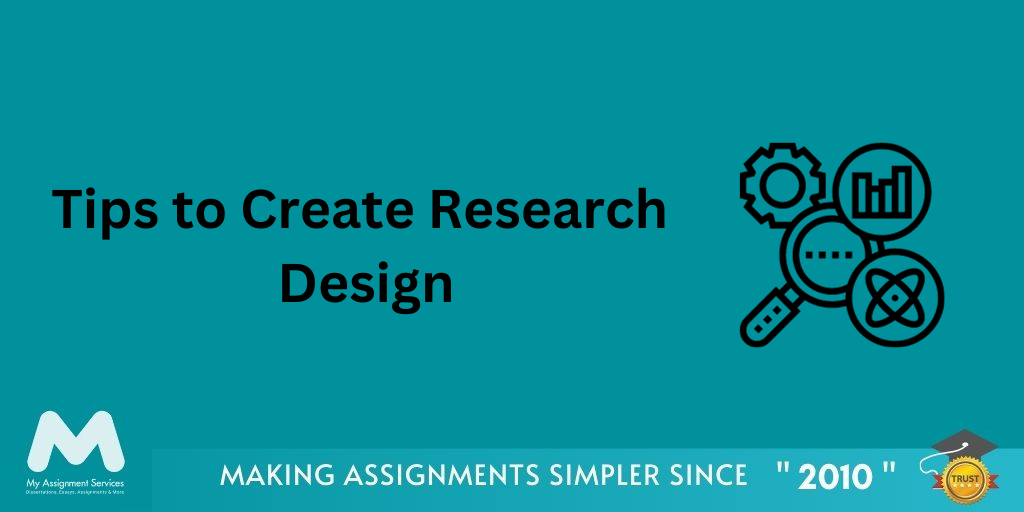
Are you also stuck at some point when it comes to create a research design? If yes! This write-up is the perfect match for you.
Furthermore, the research methodology involves an organised and well-structured method to conduct scholarly or scientific research inquiries. It is imperative to know the importance of research design and its numerous elements, as it is the basis for many studies.
Moreover, well-planned research designs ensure that your approach matches your research objectives and uses the appropriate kind of analysis for your data. You may have to write up a research design as an autonomous assignment, or it may be part of a huge research proposal or other project. However, in either case, you should carefully consider the most appropriate and practical approaches for answering your research.
Typically, your research topic will begin as a broad idea you want to explore more thoroughly. Once you have identified a research question while designing a research project and preparing research questions, you must select the relevant methodology and outline to address those questions effectively.
The design in a research study refers to the structured plan or blueprint outlining the methods and procedures employed to investigate a specific research question or hypothesis. Therefore, it encompasses decisions about data collection, sampling, and analysis. Also, it ensures a systematic and reliable approach. Common designs include experimental, correlational, and observational designs, each tailored to address distinct research objectives. Likewise, a well-prepared design enhances the study's validity and reliability. Additionally, it allows researchers to draw meaningful conclusions and contribute to advancing knowledge in their respective fields.
Creating a research design is a crucial step in any research project. It helps guide the process, structure the study, and collect relevant and reliable data. However, you can buy research papers for a precise outlook on a well-defined research design. Moreover, here are ten unique tips to help you create a powerful research design.
Clearly outlining the intent and objectives of your research is crucial. Therefore, it involves recognising the prominent questions you aim to answer, the knowledge gaps you intend to fill, and the overall goals of your study. Likewise, a well-defined set of objectives provides a way for your research and helps maintain focus throughout the process.
Before finalising, create a research design and complete a comprehensive literature review. However, this step involves reviewing existing studies and scholarly articles related to your research topic. Moreover, the literature review helps you understand your field's current knowledge and refine your research questions based on existing findings.
Selecting a research design is a crucial decision that aligns with your research purposes. Furthermore, practical designs involve manipulation and control of variables and correlational designs. Thus, it explores relationships between variables, and descriptive designs aim to provide a detailed account of a phenomenon. Choose the design with an example of a research design paper that best suits your research questions and objectives.
Develop a robust sampling strategy to ensure the representativeness of your study's results. Hence, consider factors like your sample size, the sampling method, and the population characteristics you intend to study. Likewise, a well-thought-out sampling strategy enhances the external validity of your findings.
Select appropriate data collection methods based on your research design. However, common techniques include surveys, interviews, observations, and experiments. Justify why each method is suitable for your study, considering factors like the nature of the research questions, the type of data needed, and practical considerations such as time and resources.
Before the primary data collection to create a research design, conduct a pilot study to test your research instruments and procedures. Therefore, it allows you to identify and address potential issues. Likewise, it includes ambiguities in survey questions or challenges in experimental protocols. Piloting enhances the reliability and validity of your data collection tools.
Develop a realistic and well-structured timeline for your research project. Furthermore, consider the time needed for each phase, including literature review, pilot testing, data collection, analysis, and reporting. Moreover, anticipate potential delays or obstacles and allocate time accordingly to ensure a smooth progression of the study.
Clearly outline your data analysis plan to design research methodology, specifying your statistical or qualitative methods. Thus, ensure that your chosen methods align with your research questions and objectives. A well-defined analysis plan contributes to the rigour and validity of your study's findings.
Address ethical considerations in your research design. However, if your study involves human subjects, ensure that you follow ethical guidelines, obtain necessary approvals from institutional review boards, and secure informed consent from participants. Likewise, ethical considerations are essential for protecting the rights and well-being of those involved in your study.
If you plan to buy research papers, check the flexibility throughout the research process. Furthermore, unexpected challenges may arise, requiring adjustments to your design. Being adaptable allows you to navigate unexpected issues without compromising the overall integrity of your study. Moreover, regularly review and, if necessary, revise your research design as the project progresses.
If you have maintained your sincerity and awareness intact with the goals and aims of research well enough to create a research design, you must know which research methodology will work for your project. However, before deciding which research methodology answers your research queries, you must invest your valuable time in reading and doing your project.
Furthermore, you should always opt for a quantitative research methodology if you need to gather huge amounts of data, statistics and figures. However, if you still face doubts while preparing your research design, look no further than My Assignment Services. Our expert writers know how to use appropriate research methodology to achieve your academic goals. So, what are you waiting for? Call us today and avail of our worthy services.

Bill is an academic expert in the fields of law, nursing, business, and management. His diligence in editing and writing assignments solutions has been applauded by students from around the globe; who swear by his eclectic writing style and subject matter expertise in Law and Nursing Studies. He is full time associated with Online Assignment Expert as a Senior Academic Writer and loves binge-watching on anything sci-fi.
1,212,718Orders
4.9/5Rating
5,063Experts
Turnitin Report
$10.00Proofreading and Editing
$9.00Per PageConsultation with Expert
$35.00Per HourLive Session 1-on-1
$40.00Per 30 min.Quality Check
$25.00Total
FreeGet
500 Words Free
on your assignment today
Trending now
The Student Corner
Subscribe to get updates, offers and assignment tips right in your inbox.
Popular Posts
Popular Posts
Request Callback
Doing your Assignment with our resources is simple, take Expert assistance to ensure HD Grades. Here you Go....
Lock in your expert now.
Pay the rest only after you're 100% satisfied.
Why this is a no-brainer:
Loved reading this Blog? Share your valuable thoughts in the comment section.
Add comment